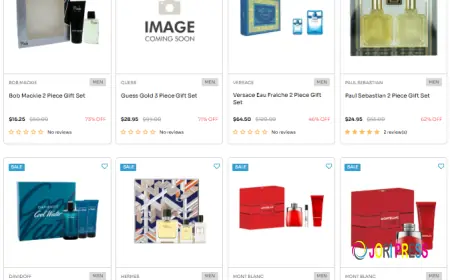Commercial Masticating Juicer Market Regional Outlook 2030
The Commercial Masticating Juicer Market is growing due to rising health consciousness, increasing demand for fresh cold-pressed juices, and expanding juice bars and wellness-focused food establishments worldwide.

The global Commercial Masticating Juicer Market has been gaining remarkable traction over the past few years, reflecting a shift in both consumer lifestyle preferences and commercial food service operations. Valued at USD 1.21 billion in 2024, the market is projected to reach USD 2.09 billion by 2030, growing at a robust CAGR of 9.60%. This expansion is powered by increasing health awareness, the surging popularity of cold-pressed juices, and rapid advancements in juicing technology.
Masticating juicers, often referred to as slow juicers or cold-press juicers, operate on a fundamentally different principle from centrifugal juicers. By working at slower speeds and using an auger mechanism, they minimize oxidation and preserve essential nutrients, flavors, and enzymes. This positions them as a preferred choice in commercial settings such as juice bars, cafés, restaurants, hotels, and wellness-focused retail outlets.
Industry Key Highlights
-
Steady Global Expansion: The commercial masticating juicer market is experiencing healthy, sustained growth driven by health-conscious consumption patterns and a surge in functional beverage offerings.
-
Premiumization of Juice Offerings: Businesses are increasingly focusing on high-quality, nutrient-rich juices that can command premium pricing.
-
Technological Upgrades: From self-cleaning systems to noise-reduction designs and IoT-enabled monitoring, innovations are making these machines more efficient and user-friendly.
-
Rising Demand in Asia Pacific: With rapid urbanization, an expanding middle class, and growing wellness culture, the Asia Pacific region is emerging as the fastest-growing market.
-
E-commerce Dominance: Online sales channels are becoming a critical driver, offering convenience, variety, and competitive pricing for commercial buyers.
-
Shift Toward Sustainability: Eco-friendly and energy-efficient models are gaining prominence in alignment with global sustainability goals.
Download Free Sample Report - https://www.techsciresearch.com/sample-report.aspx?cid=28138
Market Growth Drivers
1. Rising Health and Wellness Awareness
The demand for nutrient-dense beverages is at an all-time high, spurred by consumers’ growing awareness of the link between diet and overall health. Cold-pressed juices—produced using masticating juicers—retain more vitamins, antioxidants, and enzymes compared to traditional methods, making them highly attractive to the wellness-conscious demographic.
2. Expansion of the Functional Beverage Sector
Global interest in functional beverages—juices enriched with probiotics, plant-based proteins, or adaptogens—has expanded the market for high-quality juice extraction methods. Commercial establishments are integrating masticating juicers to produce custom blends that cater to niche dietary preferences, from detox cleanses to immunity-boosting drinks.
3. Technological Advancements
Manufacturers are investing heavily in R&D to enhance machine performance. Features like self-cleaning mechanisms, digital controls, multiple speed settings, and low-noise operations make masticating juicers more appealing to high-traffic commercial spaces where both speed and quality matter.
4. Government & Institutional Support for Healthy Diets
Many governments are promoting healthy eating habits through public campaigns and nutrition guidelines, indirectly fueling demand for fresh juice in schools, workplaces, and public institutions. Businesses in the food service industry are responding by investing in cold-press juice equipment to align with these policies.

Emerging Trends in the Market
1. Premiumization of Juice Offerings
High-end cafés, boutique juice bars, and wellness centers are differentiating themselves through premium juice menus. These juices are often organic, preservative-free, and made-to-order—commanding higher prices and improving customer loyalty.
2. Integration of Smart Technology
IoT-enabled juicers allow remote monitoring of machine performance, predictive maintenance, and automated recipe settings. This not only enhances efficiency but also reduces downtime for commercial operators.
3. Sustainable and Eco-Friendly Designs
As environmental awareness grows, manufacturers are prioritizing BPA-free materials, energy-efficient motors, and recyclable packaging for machine components. Some brands even offer trade-in programs to recycle old units.
4. Customization for Niche Markets
Juicing technology is evolving to cater to specific dietary preferences—whether for raw vegan enthusiasts, athletes requiring high-protein blends, or hospitality services targeting luxury clientele.
Market Challenges
Despite positive growth drivers, the market faces hurdles:
-
High Initial Costs: Masticating juicers are more expensive than centrifugal alternatives, posing a barrier for small businesses.
-
Time-Intensive Operations: Slower juice extraction may not suit high-volume operations requiring rapid service.
-
Maintenance Requirements: Frequent cleaning and upkeep are necessary to maintain hygiene and performance, which can increase operational costs.
-
Competitive Alternatives: Ready-to-drink juice brands and emerging extraction methods can draw customers away from freshly made juice.
Segment Analysis
By Sales Channel
-
Online Sales: The fastest-growing segment, fueled by the rise of B2B e-commerce platforms and the convenience of comparing multiple brands in one place. Online channels also provide exclusive deals, doorstep delivery, and easier warranty claims.
-
Offline Sales: Still significant, especially in regions where commercial buyers prefer in-person demonstrations and negotiations.
By Region
-
Asia Pacific: The standout growth region, with surging health awareness in China, India, and Japan. Government health initiatives and the rise of urban juice bars fuel market expansion.
-
North America & Europe: Mature markets with high competition, focusing on innovation, brand loyalty, and premium product positioning.
Competitive Analysis
The Commercial Masticating Juicer Market is moderately consolidated, with a blend of global leaders and regional specialists. Key players focus on technological innovation, durability, and ease of use to attract professional buyers.
Major Players Include:
-
Breville Group – Known for high-performance kitchen appliances and advanced juicing solutions.
-
Champion Juicer – A pioneer in durable, heavy-duty juicers for commercial applications.
-
Hurom India – Specializes in innovative slow-juicing technology with global reach.
-
Omega Products – Offers a diverse range of juicers designed for both speed and nutrient preservation.
-
Samson Life – Focuses on multipurpose masticating juicers with ergonomic designs.
-
Crown Pacific Global, Flexzion, Juicepresso USA, KUVINGS, Optimum Appliances – Compete through product variety, eco-friendly designs, and competitive pricing.
Strategic Moves Observed:
-
Collaborations with food service chains to supply equipment for large-scale juice programs.
-
Expansion into emerging markets with more affordable yet high-quality models.
-
Investment in R&D to enhance machine efficiency and minimize downtime.
Future Outlook
The commercial masticating juicer market is expected to witness consistent double-digit growth in key developing economies while maintaining steady expansion in developed markets. Factors contributing to this positive outlook include:
-
Growing global wellness movement and preference for plant-based diets.
-
Increased penetration of e-commerce in the commercial appliance segment.
-
Advancements in automation reducing the operational burden of juicing.
-
Government and corporate wellness programs encouraging fresh juice consumption in workplaces and schools.
By 2030, the market is likely to see the introduction of AI-assisted juicers capable of automatically adjusting recipes based on nutritional goals and consumer preferences, further enhancing the appeal of cold-press juices in commercial settings.
10 Benefits of the Research Report
-
Comprehensive Market Sizing – Accurate data on current market value and projected growth.
-
Segment-Wise Analysis – Detailed breakdown by product type, sales channel, and region.
-
Trend Identification – Insight into emerging patterns that will shape future demand.
-
Competitive Landscape – Profiles of major players and their strategic initiatives.
-
Technological Insights – Information on the latest innovations and advancements.
-
Consumer Behavior Analysis – Understanding end-user preferences and purchasing trends.
-
Regional Growth Opportunities – Highlighting high-potential markets for expansion.
-
Risk Assessment – Identification of challenges and potential mitigation strategies.
-
Investment Feasibility – Guidance for businesses considering market entry or expansion.
-
Strategic Recommendations – Actionable suggestions to improve market positioning.
Contact Us-
TechSci Research LLC
420 Lexington Avenue, Suite 300,
New York, United States- 10170
M: +13322586602
Website: www.techsciresearch.com
What's Your Reaction?
 Like
0
Like
0
 Dislike
0
Dislike
0
 Love
0
Love
0
 Funny
0
Funny
0
 Angry
0
Angry
0
 Sad
0
Sad
0
 Wow
0
Wow
0


















































